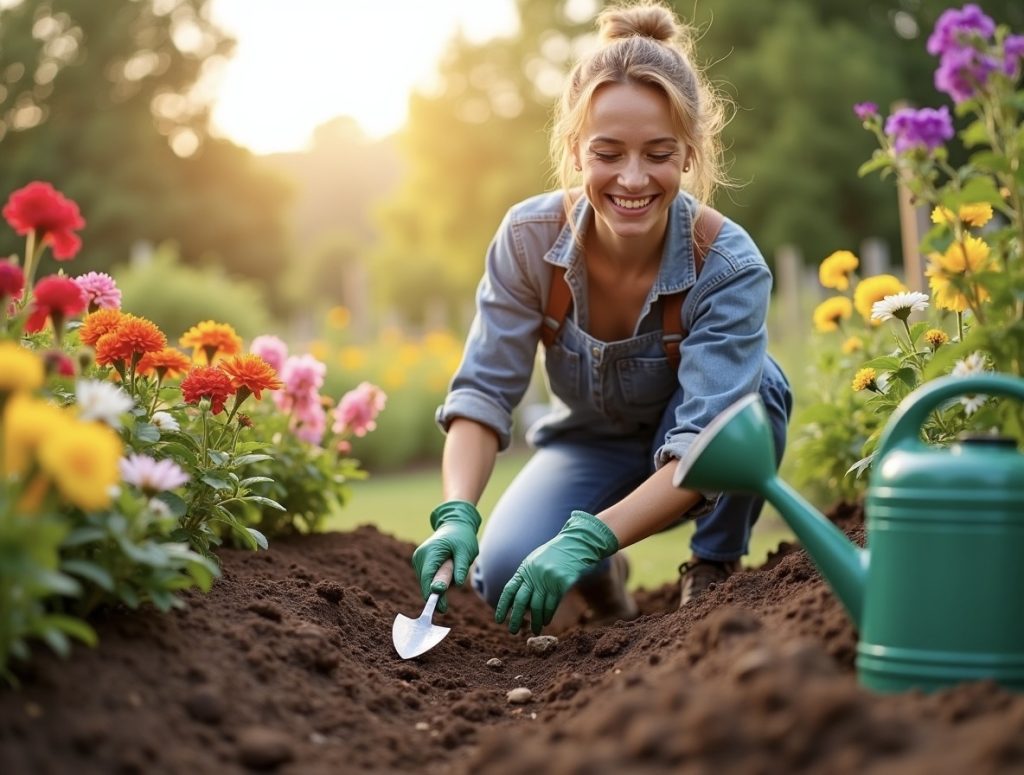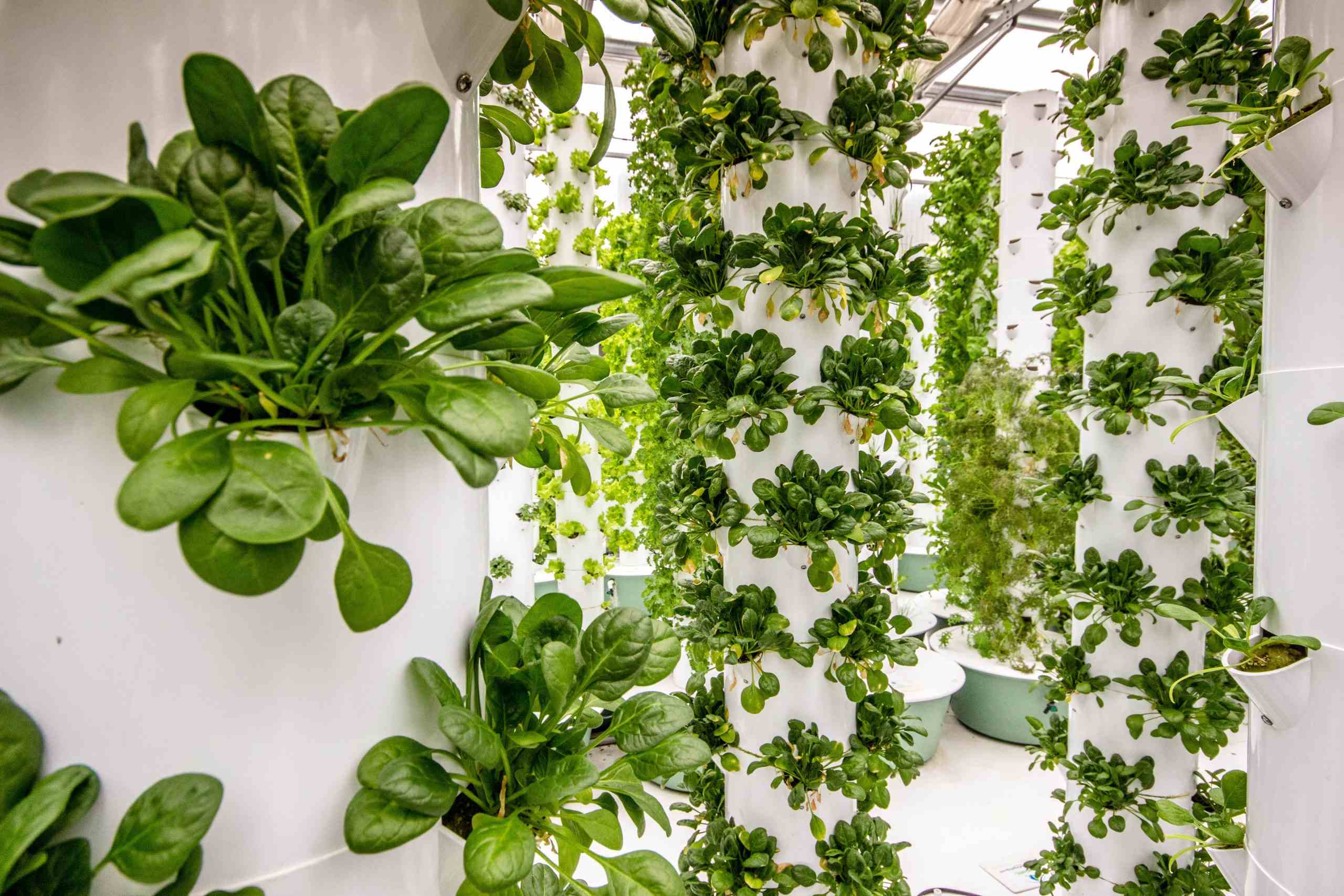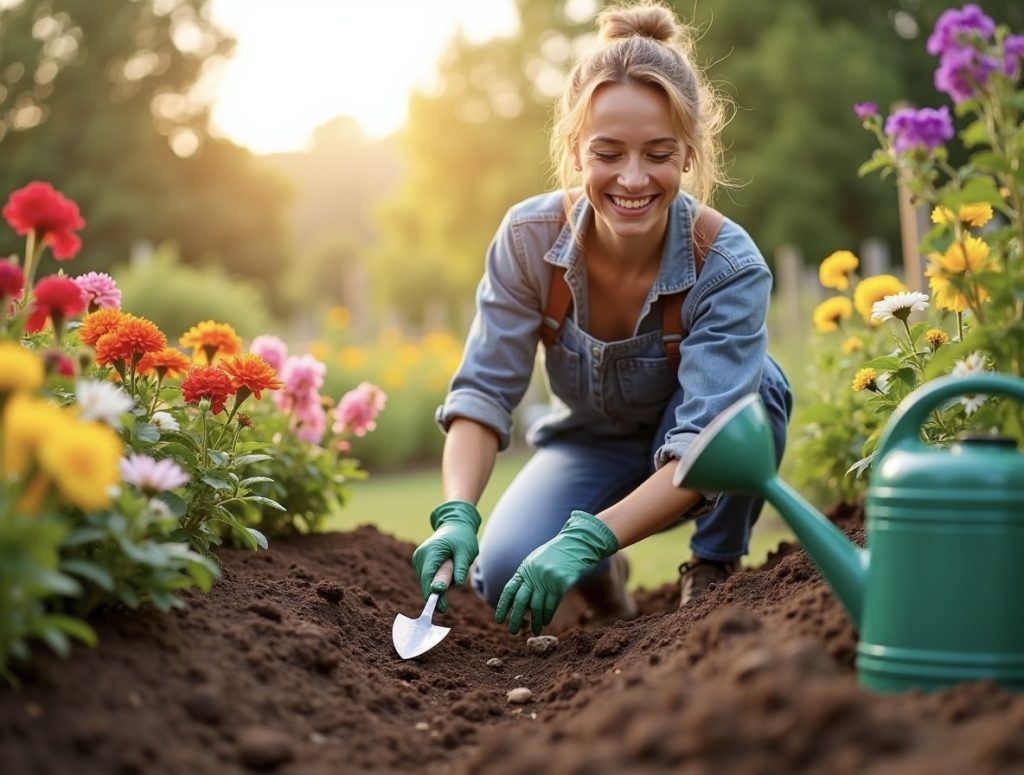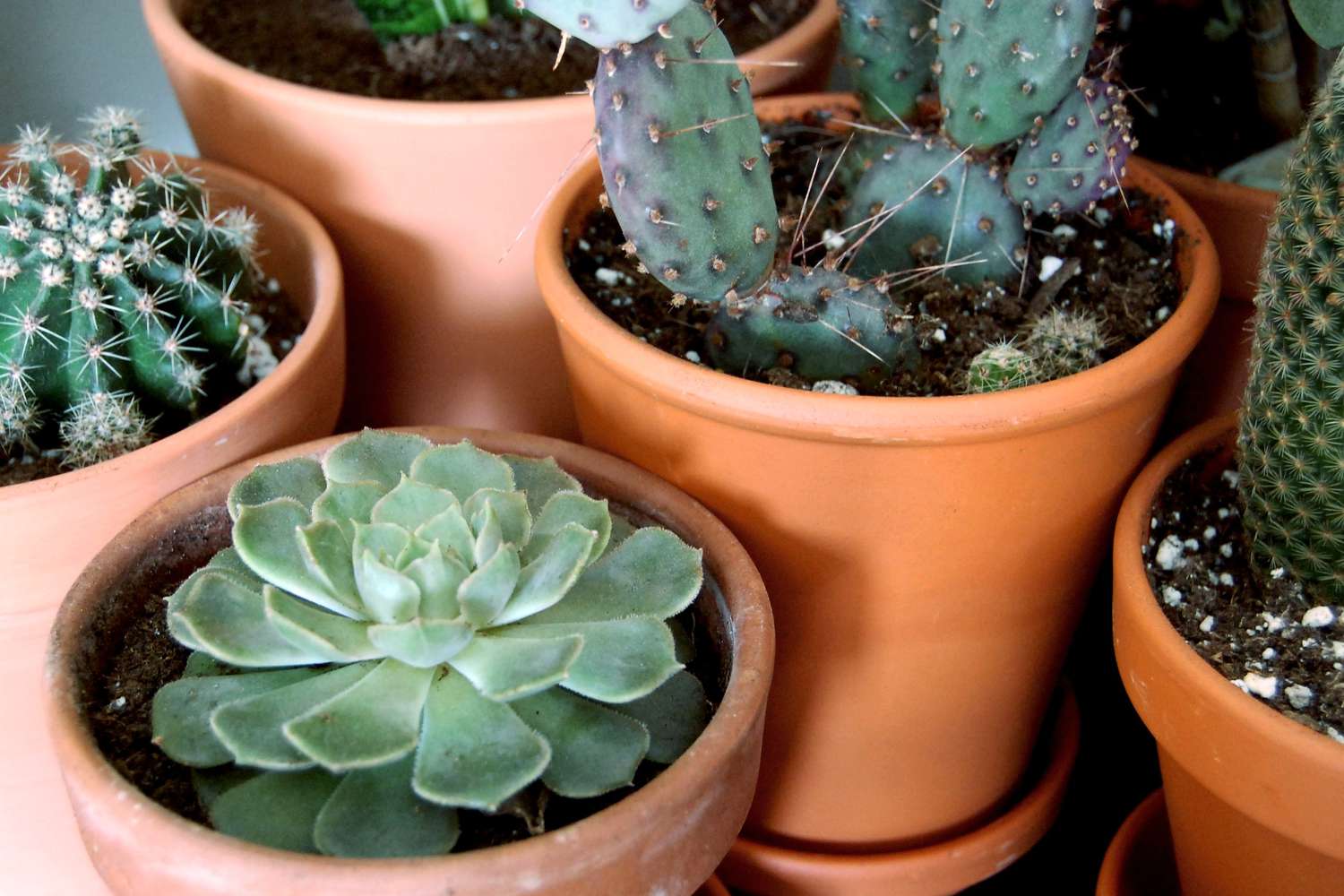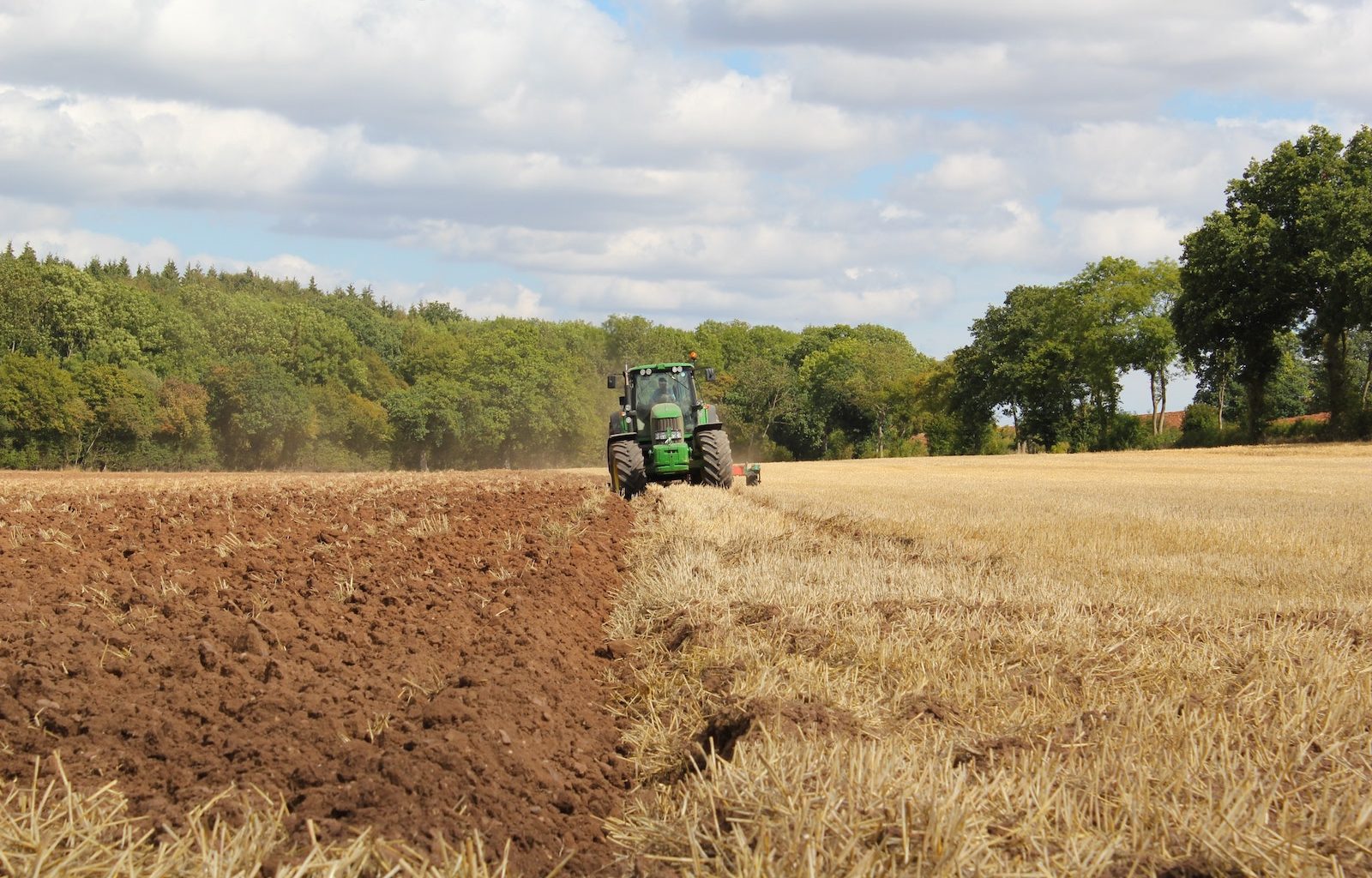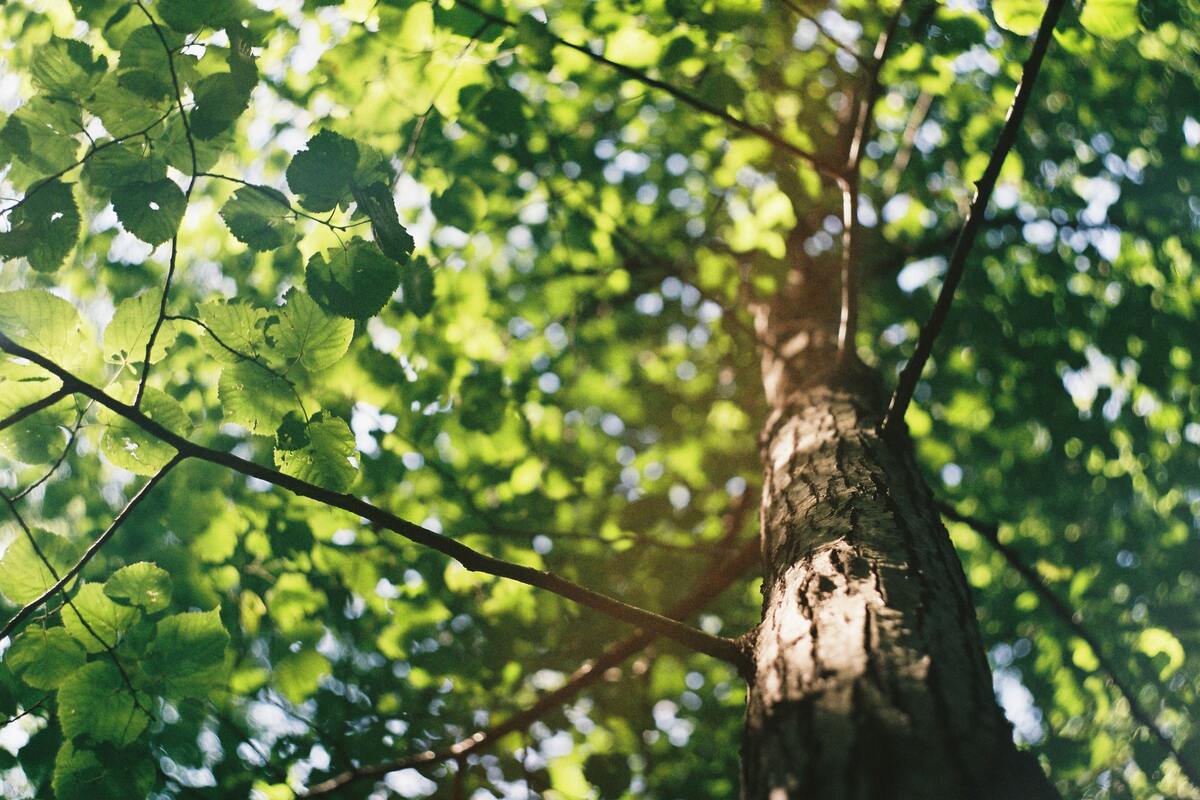Home>Gardening Basics>Understanding Soil>What Is The Difference Between Topsoil And Potting Soil
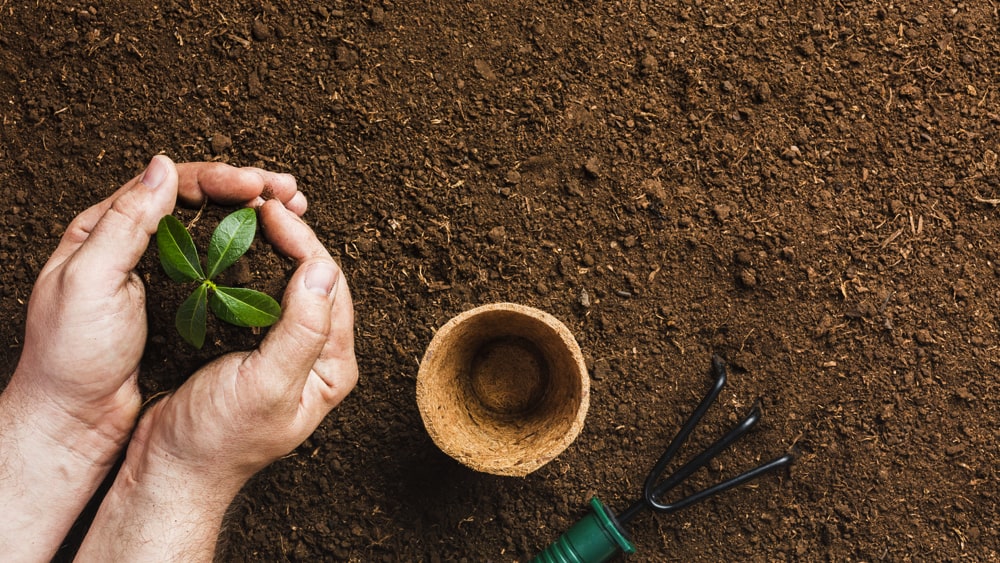

Understanding Soil
What Is The Difference Between Topsoil And Potting Soil
Modified: February 9, 2024
Learn the difference between topsoil and potting soil with this comprehensive guide. Increase your understanding of soil and choose the right mixture for your gardening needs.
(Many of the links in this article redirect to a specific reviewed product. Your purchase of these products through affiliate links helps to generate commission for Chicagolandgardening.com, at no extra cost. Learn more)
Table of Contents
Introduction
Welcome to the world of soil! Whether you’re an avid gardener or just starting out, understanding the different types of soil can greatly impact the success of your plants. Two commonly used types of soil are topsoil and potting soil. While they might sound similar, they actually have distinct differences that make them suitable for different purposes.
In this article, we will explore the characteristics, uses, and key differences between topsoil and potting soil. By the end, you’ll have a clear understanding of which soil type is best suited for your gardening needs.
Before we dive deeper, let’s clarify that topsoil and potting soil are not interchangeable terms. While both play a vital role in plant growth, they have unique compositions and purposes.
So, whether you’re planning to start a vegetable garden, maintain a beautiful flower bed, or simply pot some indoor plants, understanding the differences between topsoil and potting soil is essential. Let’s get started!
Definition of Topsoil
Topsoil is the uppermost layer of soil found on the Earth’s surface. It is the layer where most of the biological activity occurs, making it rich in organic matter and nutrients. Topsoil is formed through the gradual weathering of rocks and the decomposition of plant and animal matter over millions of years.
This type of soil is typically found in the top few inches of the Earth’s surface, ranging in depth from 2 to 8 inches. It is characterized by its dark color, crumbly texture, and being rich in organic matter, such as decomposed leaves, roots, and organisms.
The composition of topsoil can vary depending on geographical location and environmental factors. It usually consists of a mixture of sand, silt, clay, and organic matter. The presence of these different particles gives topsoil its unique texture and ability to retain water while still allowing for proper drainage.
One of the key characteristics of topsoil is its high fertility. The organic matter present in topsoil provides plants with essential nutrients and supports microbial life that helps break down organic materials further. This fertility makes topsoil ideal for gardening and agricultural purposes.
Topsoil is often used to improve the quality of existing soil or to create new beds and gardens. It provides a foundation for plant growth, ensuring that they have access to the necessary nutrients, water, and aeration.
In landscaping and construction projects, topsoil is commonly used for grading and leveling surfaces. It helps promote healthy plant growth and prevents soil erosion. Additionally, topsoil can act as a barrier to help regulate temperature and moisture levels in the ground.
Overall, topsoil serves as a crucial component in nurturing healthy plant life and maintaining the balance of ecosystems. Its rich composition and fertility make it an essential resource for a range of gardening, landscaping, and agricultural endeavors.
Definition of Potting Soil
Potting soil, also known as potting mix or soilless mix, is a specially formulated medium used for container gardening. Unlike topsoil, potting soil does not contain any actual soil. Instead, it is a blend of various organic and inorganic materials designed to provide optimal growing conditions for potted plants.
Potting soil is typically made up of a combination of peat moss, perlite, vermiculite, and other organic materials, such as compost or coconut coir. These components are carefully selected to create a well-draining and nutrient-rich environment for plants.
Peat moss is a common ingredient in potting soil due to its ability to retain moisture while still promoting proper aeration. Perlite and vermiculite, on the other hand, are lightweight materials that improve drainage and prevent the soil from becoming compacted.
In addition to the physical components, potting soil may also contain added nutrients, such as slow-release fertilizers or organic amendments, to ensure that plants have access to the necessary minerals for healthy growth. Some potting soils are specifically formulated for different types of plants, such as cacti or orchids, which have specific soil requirements.
Potting soil is typically sterile or low in microbial activity to reduce the risk of plant diseases and pests. This sterilization process helps create a clean and stable environment for plants, especially in indoor or container gardening settings.
One of the primary advantages of using potting soil is its versatility and convenience. It can be used in a wide range of applications, including indoor potted plants, container gardening, and starting seeds. Potting soil provides an ideal balance of moisture retention, aeration, and nutrient availability, making it a suitable choice for plants that require well-drained and nutrient-rich soil.
Due to its soilless nature, potting soil is lightweight and easy to handle, making it ideal for potted plants that need frequent repotting or transportation. It also reduces the risk of soilborne diseases and weeds commonly found in traditional garden soil.
Overall, potting soil is a tailored growing medium designed to provide the optimal conditions for container gardening. Its unique composition, free of soil, ensures that plants have access to the necessary nutrients, moisture, and aeration they need to thrive in a confined space.
Composition of Topsoil
Topsoil is a complex mixture of various components that determine its fertility and texture. While the exact composition can vary depending on factors such as climate, location, and geological conditions, there are several key components commonly found in topsoil.
Sand:
- Sand particles are the largest component found in topsoil.
- Sand contributes to the soil’s texture by providing good drainage and preventing compaction.
- It also helps to create air pockets in the soil, allowing oxygen to reach plant roots.
Silt:
- Silt particles are smaller than sand particles.
- Silt gives topsoil its smooth texture and enhances water retention.
- It helps maintain a good balance between retaining moisture and allowing drainage.
Clay:
- Clay particles are the smallest component found in topsoil.
- Clay provides excellent water retention but can lead to poor drainage if present in excessive amounts.
- It helps bind soil particles together, giving topsoil its ability to hold nutrients.
Organic Matter:
- Organic matter, such as decomposed plant and animal material, is a crucial component of topsoil.
- Organic matter contributes to the fertility of topsoil by providing nutrients for plants and supporting the growth of beneficial microorganisms.
- It improves the soil structure, allowing for better water infiltration and root development.
Microorganisms:
- Topsoil is teeming with a variety of microorganisms, including bacteria, fungi, and earthworms.
- These microorganisms play a vital role in breaking down organic matter and releasing nutrients that are essential for plant growth.
- They help improve soil structure, enhance nutrient availability, and support overall soil health.
pH Level:
- The pH level of topsoil is an important factor determining its suitability for different plants.
- Most plants prefer a slightly acidic to neutral pH range (around 6 to 7), but certain plants have specific pH requirements.
- Unsuitable pH levels may affect nutrient availability and hinder plant growth.
While topsoil composition can vary, a healthy topsoil will have a balanced combination of sand, silt, clay, organic matter, and active microorganisms. This rich composition provides the necessary nutrients, moisture retention, aeration, and support for plant growth.
Composition of Potting Soil
Potting soil, also known as soilless mix, is a carefully formulated blend of various components designed to provide an optimal growing environment for potted plants. Unlike topsoil, potting soil does not contain natural soil; instead, it consists of a combination of organic and inorganic materials.
The exact composition of potting soil can vary depending on the manufacturer and the specific needs of the plants it is intended for. However, there are several common components found in most potting soil mixes:
Peat Moss:
- Peat moss is a primary ingredient in many potting soils.
- It helps retain moisture in the soil, ensuring plants have a consistent water supply.
- Peat moss also improves the soil’s overall structure and aeration, promoting healthy root development.
Perlite:
- Perlite is a lightweight volcanic rock that is often added to potting soil.
- It improves drainage and prevents the soil from becoming too compacted.
- Perlite also helps create air pockets in the soil, allowing oxygen to reach the roots of the plants.
Vermiculite:
- Vermiculite is another mineral used in potting soil mixes.
- It has excellent water retention properties, ensuring that the soil remains moist but not waterlogged.
- Vermiculite also aids in providing aeration to the roots and improving overall soil structure.
Coconut Coir:
- Coconut coir, derived from the husk of coconuts, is increasingly used as an alternative to peat moss.
- It has similar properties to peat moss, such as water retention and aeration, but is more sustainable and environmentally friendly.
- Coconut coir helps maintain moisture levels in the soil and promotes better root growth.
Compost:
- Compost is organic matter that has been decomposed and recycled.
- It enriches potting soil with essential nutrients, promoting plant growth and overall soil health.
- Compost also improves soil structure and fertility, leading to healthier and more productive plants.
Fertilizers:
- Potting soil may contain slow-release fertilizers or organic amendments.
- These nutrients provide plants with the necessary elements for healthy growth.
- Fertilizers ensure that potted plants have access to vital nutrients, as the limited space of the container may restrict nutrient availability.
Overall, the composition of potting soil is carefully balanced to ensure optimal moisture retention, aeration, and nutrient availability. The combination of organic and inorganic materials provides potted plants with an ideal growing environment, promoting healthy root development and robust plant growth.
Uses of Topsoil
Topsoil plays a crucial role in various gardening, landscaping, and agricultural applications due to its fertility and composition. Here are some common uses of topsoil:
Gardening:
- Topsoil is an essential component when creating new garden beds or improving existing soil.
- It provides a fertile base for plants, supplying essential nutrients and supporting healthy root growth.
- Topsoil helps retain moisture, ensuring plants have access to an adequate water supply.
- It also improves the overall soil structure and drainage, creating an optimal growing environment.
Landscaping:
- In landscaping projects, topsoil is often used for grading or leveling surfaces.
- It helps create a smooth and even ground, providing a stable foundation for lawns, flower beds, or other landscape features.
- Topsoil also acts as a protective layer, preventing soil erosion and maintaining the integrity of the landscape.
Agriculture:
- Topsoil is vital in agricultural practices, providing a fertile medium for crop cultivation.
- It supports plant growth by supplying essential nutrients and serving as a reservoir for water.
- Topsoil promotes healthy root development, enabling crops to access nutrients and anchor firmly in the ground.
- It also encourages beneficial microbial activity, contributing to the overall soil health and fertility.
Erosion Control:
- When exposed soil is at risk of erosion due to wind or water, topsoil can be used as a protective cover.
- By applying a layer of topsoil, soil erosion can be minimized, preserving the integrity of the landscape and preventing nutrient loss.
- Topsoil acts as a barrier, reducing the impact of erosion-causing factors and maintaining soil stability.
Construction and Restoration:
- In construction projects, topsoil is often used to restore disturbed land or mitigate the impact of construction activities.
- It helps rejuvenate the soil and establish a healthy environment for future vegetation.
- Topsoil aids in the reestablishment of vegetation, promoting the natural recolonization of plants and restoring the ecosystem.
Overall, topsoil serves as a foundation for plant growth and is widely used in gardening, landscaping, agriculture, erosion control, and restoration efforts. Its fertility, ability to retain moisture, and support for healthy root development make it an invaluable resource in various applications.
Uses of Potting Soil
Potting soil, also known as soilless mix, is a versatile medium that finds widespread use in indoor and outdoor gardening. Its unique composition and characteristics make it ideal for various applications. Here are some common uses of potting soil:
Container Gardening:
- Potting soil is primarily used for container gardening, where plants are grown in pots, containers, or raised beds instead of directly in the ground.
- It provides a lightweight and well-draining growing medium for potted plants.
- Potting soil promotes healthy root development by ensuring proper aeration and moisture retention in confined spaces.
- It contains essential nutrients to support plant growth, reducing the need for frequent fertilization.
Indoor Plant Care:
- Potting soil is commonly used for indoor plants, as it offers excellent drainage and moisture control.
- It helps prevent overwatering, which can be problematic in indoor environments with limited air circulation.
- Potting soil also retains moisture, ensuring that indoor plants have a consistent water supply.
- It can be sterilized, reducing the risk of pests and diseases often associated with traditional garden soil.
Seed Starting:
- Potting soil is an ideal medium for starting seeds, providing the proper conditions for germination and early plant growth.
- It offers a sterile and well-balanced environment, minimizing the risk of disease or damping-off.
- Potting soil retains moisture, keeping seeds hydrated during the germination process.
- The fine texture of potting soil allows seedlings to establish strong root systems.
Houseplant Repotting:
- When repotting houseplants, potting soil is often used to provide fresh nutrients and a suitable growing environment.
- It allows plants to adjust to a new container while providing optimal moisture retention and drainage.
- The mixture of organic and inorganic materials in potting soil helps replenish nutrients and support healthy plant growth.
Specialized Plant Requirements:
- Potting soils are available in specific formulations tailored to the needs of specific plants, such as cacti, orchids, or succulents.
- These specialized potting mixes accommodate the unique soil requirements of these plants, such as better drainage or increased water retention.
- Potting soil ensures that the specific needs of different plant species are met, fostering their growth and overall health.
Overall, potting soil is a versatile medium used for container gardening, indoor plants, seed starting, and repotting. Its unique composition provides the optimal balance of moisture retention, aeration, and nutrient availability, supporting healthy plant growth in a range of horticultural settings.
Key Differences between Topsoil and Potting Soil
While both topsoil and potting soil serve as essential components in gardening, landscaping, and plant care, it is important to understand their key differences. Here are the main distinctions between topsoil and potting soil:
Composition:
- Topsoil is composed of a mixture of sand, silt, clay, organic matter, and microorganisms that occur naturally in the environment.
- Potting soil, on the other hand, is a soilless mix made up of components such as peat moss, perlite, vermiculite, and organic materials.
- While topsoil contains naturally occurring elements, potting soil is specifically engineered to provide the ideal conditions for potted plants.
Water Retention and Drainage:
- Topsoil has moderate water retention capabilities and drainage properties, which can vary depending on the soil composition.
- Potting soil is designed to have excellent drainage to prevent waterlogging in container gardening, while still retaining enough moisture for plant growth.
- The presence of components like perlite and vermiculite in potting soil ensures proper aeration and prevents the soil from becoming compacted.
Nutrient Content:
- Topsoil contains varying levels of natural nutrients, with specific composition varying based on geographic location and environmental factors.
- Potting soil often includes added nutrients, such as slow-release fertilizers or organic amendments, to provide optimal nutrition for potted plants.
- These added nutrients in potting soil help compensate for the limited space and restricted nutrient availability in container gardening.
Sterility:
- Topsoil can contain a diverse range of microorganisms, both beneficial and potentially harmful.
- Potting soil is typically sterilized or low in microbial activity to reduce the risk of diseases and pests commonly associated with garden soil.
- The sterilization process in potting soil ensures a clean environment for indoor plants and minimizes the chances of introducing harmful organisms.
Usage:
- Topsoil is commonly used for improving the quality of existing soil, creating new garden beds, and landscaping projects.
- Potting soil is primarily used for container gardening, indoor plant care, seed starting, and repotting.
- Potting soil provides the specific characteristics needed for potted plants, such as proper drainage, moisture retention, and nutrient availability.
Overall, the key differences between topsoil and potting soil lie in their composition, water retention, nutrient content, sterility, and intended usage. Understanding these distinctions is essential to ensure the appropriate choice for specific gardening needs and to provide an optimal growing environment for plants.
Factors to Consider When Choosing Topsoil or Potting Soil
Choosing between topsoil and potting soil depends on several factors, including the specific gardening needs and the intended use. Here are some key factors to consider when deciding which type of soil to use:
Gardening Method:
- If you are gardening in containers or pots, potting soil is the obvious choice. Its composition and characteristics are specifically designed to meet the needs of potted plants, ensuring proper drainage, moisture retention, and nutrient availability.
- For traditional in-ground gardening or landscaping projects, topsoil is more suitable. It can improve soil quality, promote healthy root development, and provide a fertile base for plants.
Plant Types:
- Consider the specific requirements of the plants you are growing. Some plants, such as cacti or succulents, prefer well-draining soil, making potting soil a better choice. Other plants, like certain vegetables or flowers, may thrive in nutrient-rich topsoil.
- Specialized potting soils are available for plants with specific needs, such as orchids or acid-loving plants. These specialized mixes cater to the unique requirements of those plant varieties.
Watering and Drainage:
- If you tend to overwater or have plants that are sensitive to waterlogged conditions, potting soil is preferable. Its excellent drainage properties can prevent water accumulation and the risk of root rot.
- If you live in an area with high rainfall or poor drainage, topsoil with moderate drainage capabilities may help maintain proper moisture levels without excessive water retention.
Environmental Considerations:
- Consider the environmental impact when choosing soil. Topsoil is a natural resource that can be obtained locally or through sustainable sources. Using topsoil can contribute to soil conservation and reduce the need for synthetic additives.
- On the other hand, potting soil often contains peat moss, which is harvested from sensitive ecosystems. If sustainability is a concern, you may opt for peat-free alternatives, such as those that use coconut coir as a substitute.
Budget and Accessibility:
- Take into account the cost and availability of the soil options. Topsoil is typically more readily available and cost-effective, especially if obtained locally from reputable suppliers.
- Potting soil, on the other hand, can be more expensive due to the specific materials and processes involved in its production. Additionally, specialized potting mixes may have higher price points.
Ultimately, the choice between topsoil and potting soil depends on your gardening method, plant types, watering and drainage needs, environmental considerations, and budget. Carefully evaluating these factors will help you make an informed decision and provide the best soil for your plants’ specific requirements.
Conclusion
Understanding the differences between topsoil and potting soil is crucial when it comes to successful gardening and plant care. While both serve important roles, they have distinct compositions and uses.
Topsoil, composed of a mixture of sand, silt, clay, organic matter, and microorganisms, is ideal for traditional gardening, landscaping, and agricultural applications. It enriches soil quality, supports plant growth, and helps prevent erosion. Its fertility and ability to retain moisture make it an essential resource for nurturing healthy plants.
Potting soil, a soilless mix made from components like peat moss, perlite, and vermiculite, caters specifically to the needs of container gardening. It provides optimal drainage, moisture retention, and nutrient availability, enabling potted plants to thrive in confined spaces. Potting soil is also sterile or low in microbial activity, reducing the risk of diseases and pests commonly associated with traditional soil.
When choosing between the two, it is crucial to consider factors such as gardening method, plant types, watering and drainage needs, environmental considerations, and budget. By evaluating these factors, you can make an informed decision and provide the best soil for your specific gardening needs.
Whether you are starting a lush garden, tending to indoor plants, or embarking on a landscaping project, the right soil choice will significantly impact the success of your endeavor. So take the time to understand the differences between topsoil and potting soil, and choose the soil that will create the ideal environment for your plants to flourish.
